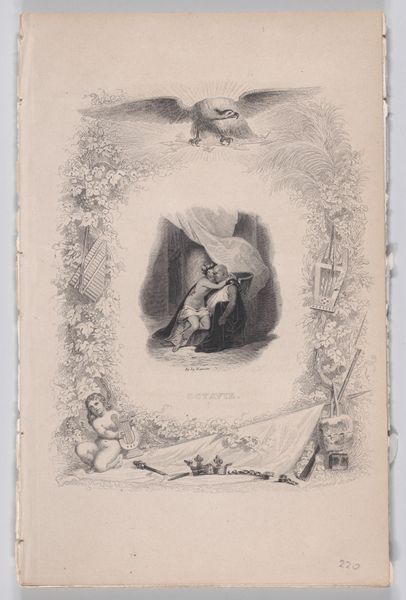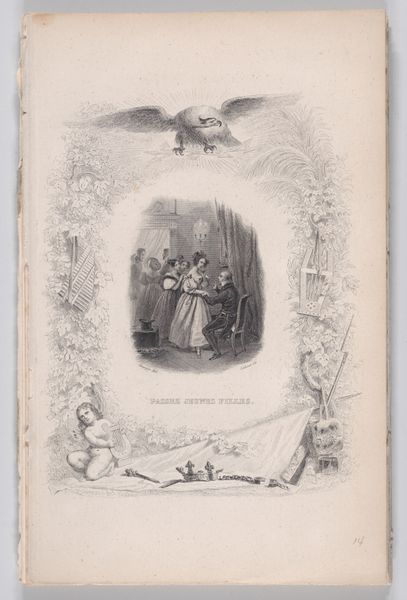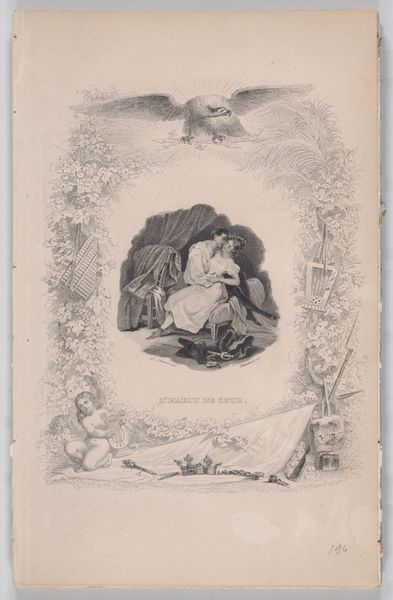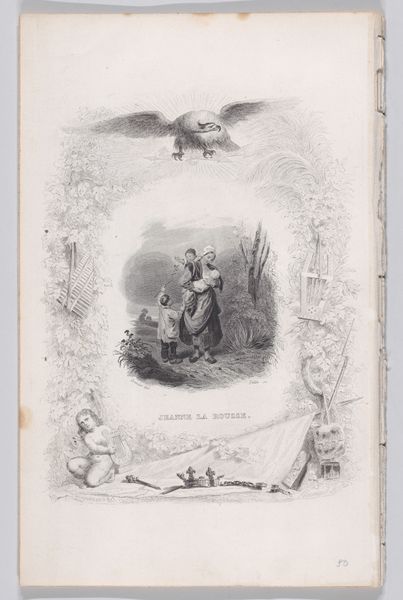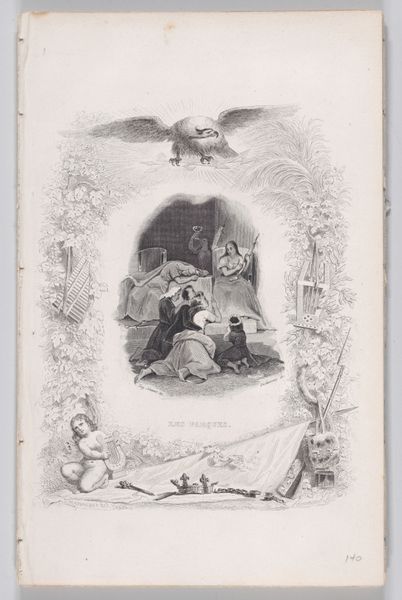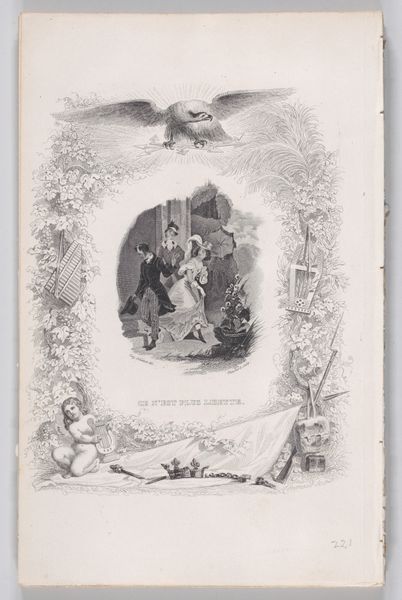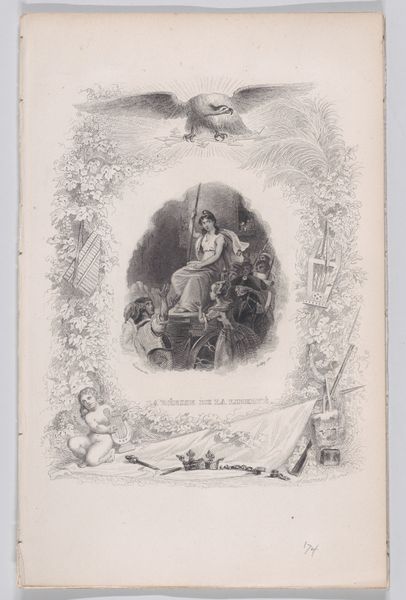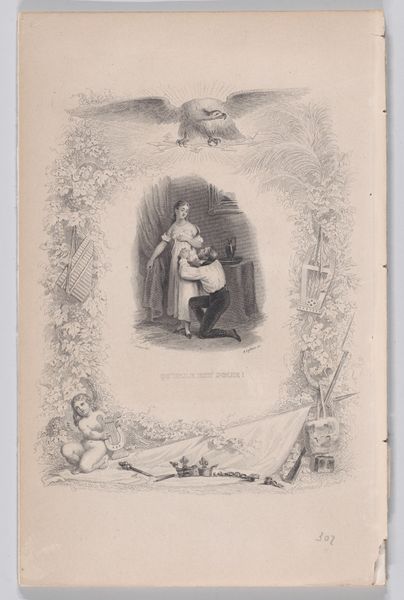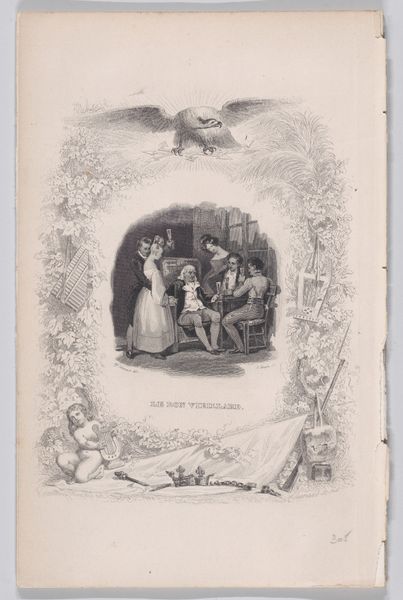
"The Hat of the Bride" from The Songs of Béranger 1829
0:00
0:00
drawing, print, engraving
#
drawing
#
narrative-art
# print
#
figuration
#
romanticism
#
line
#
engraving
Dimensions: Sheet: 8 5/8 × 5 1/2 in. (21.9 × 14 cm)
Copyright: Public Domain
Editor: So, here we have "The Hat of the Bride" from The Songs of Béranger, an 1829 engraving by Alfred Johannot. The first thing that strikes me is the detailed border framing the central scene, almost like looking into a dream. How do you interpret this work? Curator: I see this piece as a powerful commentary on the shifting social landscape of post-revolutionary France. The very act of depicting a 'bride's hat'— a symbol of bourgeois domesticity —within such elaborate, almost propagandistic, imagery invites us to question traditional power structures and gender roles. Notice the imagery used: What does the presence of the eagle above the couple suggest about the influence of empire, and perhaps the limits of individual freedom, even in marriage? Editor: That's fascinating. I hadn't considered the eagle as a symbol of constraint, more of freedom. The objects below—crown, lyre, and weapons—appear almost discarded. Curator: Exactly! Are they symbols of abandoned ideologies or tools of power? Consider how Johannot is using romantic symbolism not just to evoke emotion, but also to critique the societal expectations placed upon women, particularly within the context of marriage. Marriage at this time can be regarded as an enforced condition within society, which required financial security but equally suppressed women’s freedoms. How does that central couple seem to you - is this a romantic union, or something closer to a business arrangement? Editor: It's hard to tell. They look posed, almost stiff. The fact that the "hat" is the titular subject is striking. Thank you for making me think more critically about this image. It seems like an argument more than a simple illustration. Curator: Precisely. By connecting the artwork to the broader history of societal structures and constraints, we gain a richer understanding, not only of art but of ourselves.
Comments
No comments
Be the first to comment and join the conversation on the ultimate creative platform.
